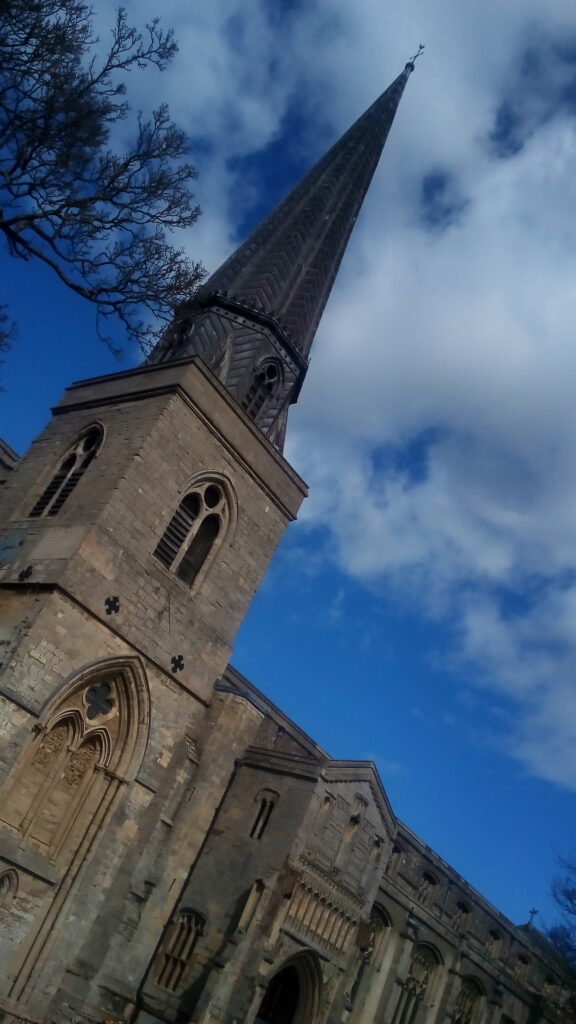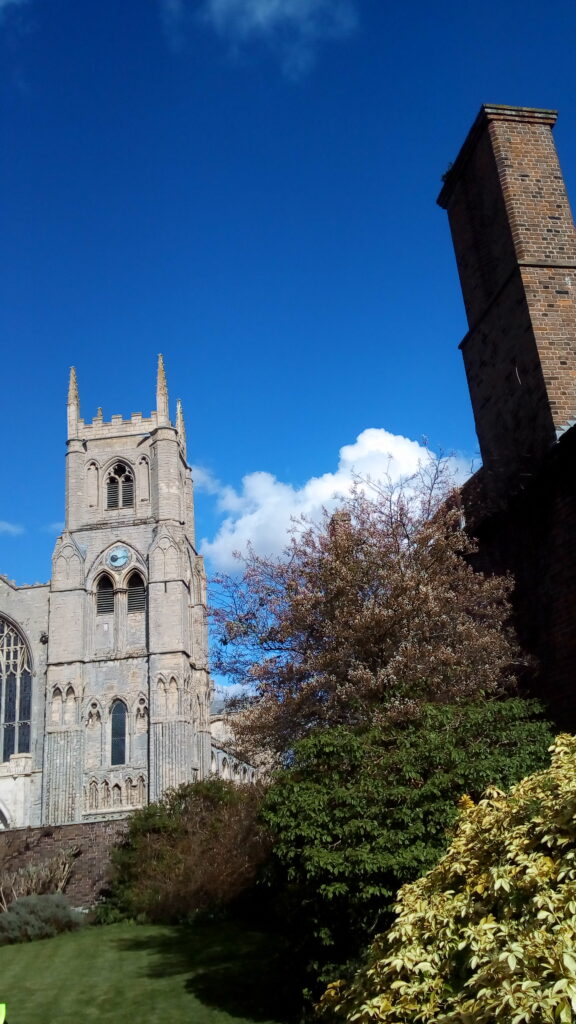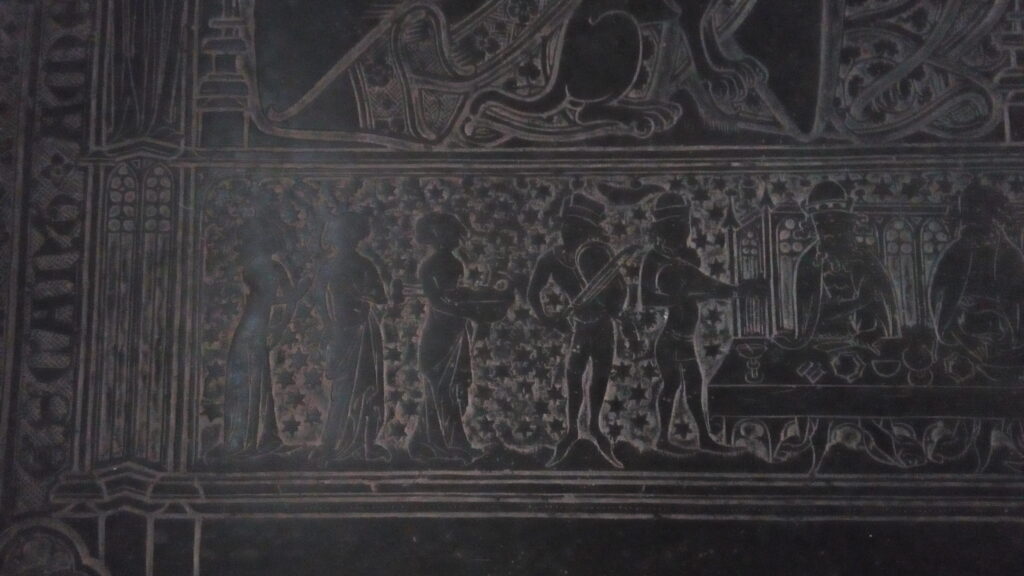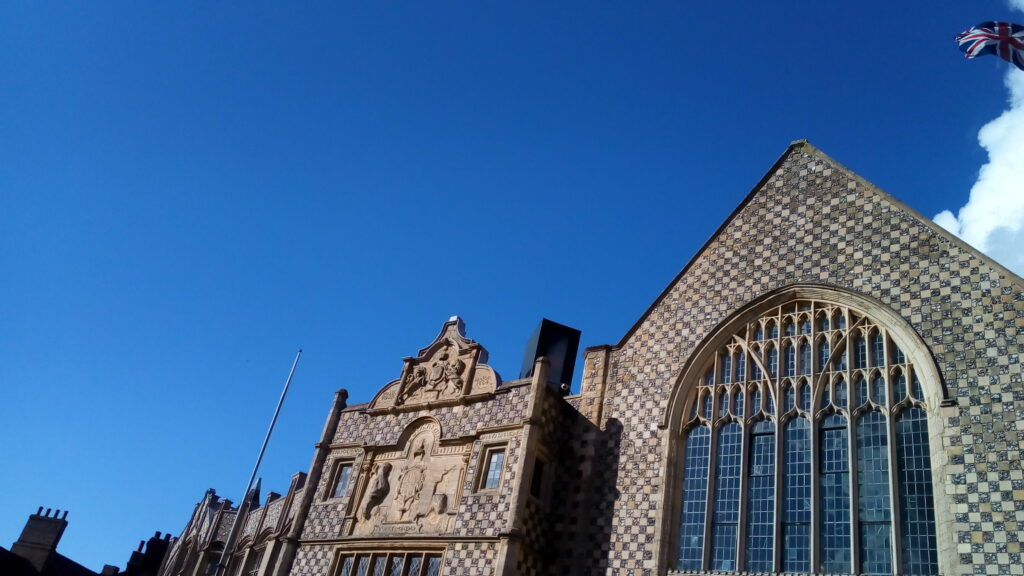Margery Kempe: her book
And oftyn in the mene tyme, whan the creatur was in cherche, owr Lord Jhesu Crist wyth hys gloryows Modyr and many seyntys also comyn into hir sowle and thankyd hir, seying that they were wel plesyd wyth the writyng of this boke.
The Book of Margery Kempe
Margery Kempe, born around 1373, was a visionary and mystic from Kings Lynn (then known as Bishops Lynn) in Norfolk. Her book is the first autobiography in English, described as being written by a scribe on her behalf. The story she tells of her life is extraordinary, both strange and familiar to us today. She was an enthusiastic pilgrim, visiting Rome, Jerusalem, Santiago de Compostela and the relics of the Holy Blood in Bad Wilsnack in northern Germany as well as pilgrimage places in England like Canterbury, Norwich, Leicester, Melton Mowbray, York, Beverley, Lincoln, London and Ely. She even brushed with Norway by accident when the boat taking her to Germany was swept off course.
Some historic places in Kings Lynn






(I visited Kings Lynn in early April 2022 during an Early Music weekend run by the King’s Lynn festival, watching a lovely concert by the ensemble Fair Oriana and participating in a history walk around the town that revealed some of the places associated with the eighteenth-century musician and writer, Charles Burney, a former resident.)
My concert
On a nygth, as this creatur lay in hir bedde wyth hir husbond, sche herd a sownd of melodye so swet and delectable, hir thowt, as sche had ben in paradyse. And therwyth sche styrt owt of hir bedde and seyd, “Alas, that evyr I dede synne, it is ful mery in hevyn.” Thys melody was so swete that it passyd alle the melodye that evyr myght be herd in this world wythowtyn ony comparyson
The Book of Margery Kempe
In my concert, I evoke some of her journeys and meetings with music from the places she visited. There are Gregorian chants from Cyprus and from Jerusalem, pilgrim songs, music from the Old Hall manuscript, medieval English carols in honour of saints alongside sacred music from places Kempe visited in Germany, Spain and Italy.
As a lone woman pilgrim myself, I have experienced some of the same censure and concern that Kempe did. In spite of the privations and difficulties of the journeys I’ve made, there are so many joys too that I am constantly called to walk again, just like her. Vilified and criticised by her contemporaries and considered by modern scholars to be less important than the quiet and inward-looking mystic Julian of Norwich, Margery has a lot to teach us about listening to your heart, emotional openness, sensitivity, persistence, resistance and courage. She is also a wonderfully powerful and quirky role model who deserves to be better known.
